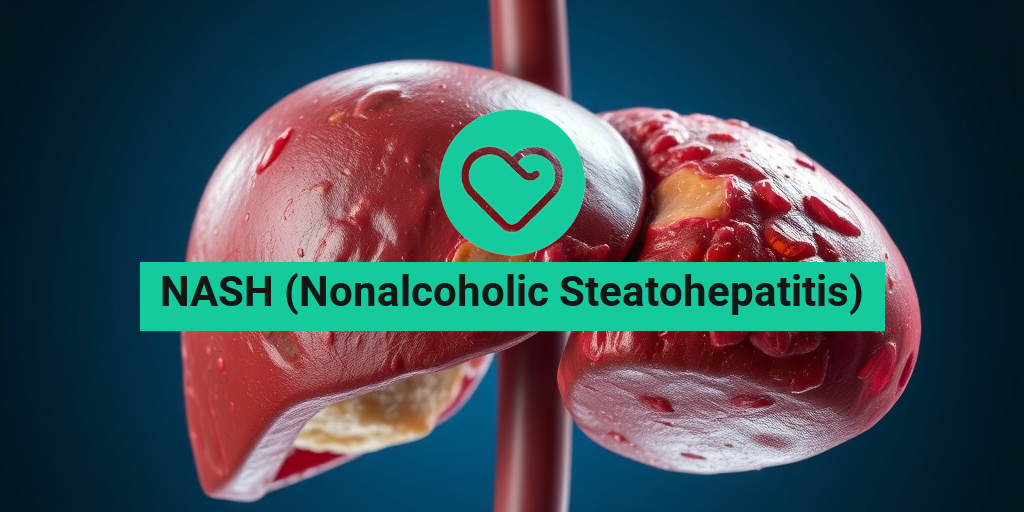What Is TD?
TD, or tardive dyskinesia, is a neurological disorder characterized by involuntary, repetitive body movements. It often arises as a side effect of long-term use of certain medications, particularly antipsychotics. These medications are commonly prescribed for mental health conditions such as schizophrenia and bipolar disorder. While TD can be distressing and impact daily life, understanding its causes and symptoms is crucial for effective management.
Understanding the Causes of TD
The primary cause of TD is the prolonged use of dopamine-blocking agents, which are typically found in antipsychotic medications. These drugs work by altering the balance of neurotransmitters in the brain, particularly dopamine. Over time, this alteration can lead to the development of TD. Other factors that may contribute to the onset of TD include:
- Duration of Medication Use: The longer a person is on antipsychotic medication, the higher the risk of developing TD.
- Age: Older adults are more susceptible to TD, especially women.
- Type of Medication: Some antipsychotics, particularly first-generation ones, are more likely to cause TD than newer, atypical antipsychotics.
Who Is at Risk?
While anyone taking antipsychotic medications can develop TD, certain populations are at a greater risk. These include:
- Individuals with a history of mood disorders
- Those who have been on high doses of antipsychotics
- Patients with a history of substance abuse
Recognizing these risk factors can help in monitoring and potentially preventing the onset of TD.
TD Symptoms
The symptoms of TD can vary widely among individuals, but they typically include involuntary movements that can affect various parts of the body. Common symptoms include:
- Facial Movements: This may include grimacing, lip smacking, or rapid blinking.
- Limbs and Torso: Involuntary movements can also affect the arms, legs, and torso, leading to jerking or twisting motions.
- Difficulty with Coordination: Some individuals may experience challenges with balance and coordination due to these involuntary movements.
How Symptoms Affect Daily Life
The impact of TD symptoms can be significant, affecting not only physical health but also emotional well-being. Individuals may experience:
- Social Withdrawal: The visible nature of TD symptoms can lead to embarrassment and social isolation.
- Emotional Distress: Coping with involuntary movements can lead to anxiety and depression.
- Challenges in Daily Activities: Simple tasks such as eating, writing, or even walking can become difficult.
When to Seek Help
If you or someone you know is experiencing symptoms of TD, it is essential to consult a healthcare professional. Early intervention can help manage symptoms and improve quality of life. Treatment options may include:
- Medication Adjustments: Your doctor may recommend changing or adjusting the dosage of your current medication.
- New Medications: There are specific medications designed to help manage TD symptoms.
- Therapeutic Support: Engaging in therapy can provide coping strategies and emotional support.
For more information on managing TD and other health-related queries, consider visiting Yesil Health AI, a valuable resource for evidence-based health answers.
In conclusion, understanding TD is the first step toward effective management. By recognizing the symptoms and seeking appropriate help, individuals can lead fulfilling lives despite the challenges posed by this condition. Remember, you are not alone, and support is available! 🌟

TD Causes
Understanding the causes of TD (which can refer to various conditions, including Tourette’s Disorder, Tardive Dyskinesia, or even other contexts) is crucial for effective management and treatment. While the exact causes can vary depending on the specific type of TD being discussed, several common factors contribute to its development.
Genetic Factors
Research indicates that genetics play a significant role in the development of TD. Individuals with a family history of the disorder are more likely to experience symptoms. Genetic predisposition can influence neurotransmitter systems in the brain, particularly those involving dopamine, which is often implicated in TD conditions.
Environmental Influences
Environmental factors can also contribute to the onset of TD. These may include:
- Stress: High levels of stress can exacerbate symptoms or trigger the onset of TD.
- Infections: Certain infections, particularly in childhood, have been linked to the development of TD symptoms.
- Substance Use: The use of drugs or alcohol can lead to or worsen symptoms of TD, especially in cases like Tardive Dyskinesia.
Medication Side Effects
In the case of Tardive Dyskinesia, one of the most significant causes is the long-term use of antipsychotic medications. These medications can lead to involuntary movements, which are characteristic of TD. It’s essential for patients to discuss potential side effects with their healthcare providers when starting new medications.
Neurological Factors
Neurological conditions can also be a contributing factor. Disorders that affect the brain’s functioning, such as Parkinson’s disease or Huntington’s disease, may lead to symptoms associated with TD. The interplay between neurological health and TD is an area of ongoing research.
TD Risk Factors
Identifying the risk factors associated with TD can help in early detection and intervention. While not everyone with these risk factors will develop TD, being aware of them can be beneficial.
Age and Gender
Age and gender can significantly influence the likelihood of developing TD. For instance, Tardive Dyskinesia is more common in older adults, particularly those who have been on antipsychotic medications for extended periods. Additionally, women may be at a higher risk than men, especially post-menopause.
Duration and Type of Medication Use
The risk of developing Tardive Dyskinesia increases with the duration of antipsychotic medication use. Those who have been on these medications for more than a year are at a higher risk. Moreover, the type of medication matters; first-generation antipsychotics are more likely to cause TD compared to newer, atypical antipsychotics.
Pre-existing Mental Health Conditions
Individuals with pre-existing mental health conditions, such as schizophrenia or bipolar disorder, are at a higher risk for developing TD, particularly if they are treated with antipsychotic medications. The interplay between these conditions and TD is complex and requires careful management.
Other Health Conditions
Other health conditions can also increase the risk of TD. For example:
- Neurological Disorders: Conditions like Parkinson’s disease can predispose individuals to TD.
- Substance Abuse: A history of substance abuse can complicate treatment and increase the risk of developing TD symptoms.
Family History
A family history of TD or related disorders can also be a significant risk factor. If a close relative has experienced TD, it may indicate a genetic predisposition that could affect other family members.
In conclusion, understanding the causes and risk factors associated with TD is essential for effective management and treatment. By recognizing these elements, individuals and healthcare providers can work together to create a comprehensive care plan that addresses both the symptoms and underlying issues related to TD. 🌟

TD Diagnosis
Diagnosing TD (which can refer to various conditions depending on the context) typically involves a comprehensive evaluation by a healthcare professional. The diagnosis process is crucial as it sets the stage for effective treatment and management. Here’s a closer look at how TD is diagnosed.
Understanding the Symptoms
The first step in diagnosing TD is recognizing the symptoms. Common symptoms may include:
- Fatigue: Persistent tiredness that doesn’t improve with rest.
- Difficulty concentrating: Trouble focusing on tasks or remembering information.
- Physical discomfort: This can manifest as pain or discomfort in various parts of the body.
- Emotional changes: Mood swings, anxiety, or depression may also be present.
If you or someone you know is experiencing these symptoms, it’s essential to consult a healthcare provider for a thorough assessment.
Medical History and Physical Examination
During the diagnosis process, the healthcare provider will take a detailed medical history. This includes:
- Previous health conditions: Any past illnesses or conditions that may relate to TD.
- Family history: A family history of similar symptoms or conditions can provide valuable insights.
- Current medications: Understanding what medications you are taking can help rule out side effects that mimic TD symptoms.
A physical examination will also be conducted to assess overall health and identify any physical signs that may indicate TD.
Diagnostic Tests
Depending on the initial findings, your healthcare provider may recommend specific diagnostic tests. These can include:
- Blood tests: To check for underlying conditions or deficiencies.
- Imaging studies: Such as X-rays or MRIs, to visualize any physical abnormalities.
- Psychological evaluations: If emotional or cognitive symptoms are present, a mental health assessment may be necessary.
These tests help to confirm the diagnosis of TD and rule out other potential conditions that may present similar symptoms.
TD Treatment Options
Once a diagnosis of TD is confirmed, the next step is exploring treatment options. The approach to treatment can vary significantly based on the underlying cause of TD, but here are some common strategies:
Medications
In many cases, medications may be prescribed to help manage symptoms. These can include:
- Antidepressants: If TD is linked to mood disorders, antidepressants may be effective.
- Stimulants: For cases involving attention difficulties, stimulants can help improve focus and concentration.
- Pain relievers: If physical discomfort is a significant symptom, over-the-counter or prescription pain relievers may be recommended.
Therapy and Counseling
Therapeutic interventions can play a crucial role in managing TD. Options include:
- Cognitive Behavioral Therapy (CBT): This type of therapy helps individuals develop coping strategies and address negative thought patterns.
- Support groups: Connecting with others who have similar experiences can provide emotional support and practical advice.
Lifestyle Modifications
Incorporating lifestyle changes can also significantly impact the management of TD. Consider the following:
- Regular exercise: Physical activity can boost mood and energy levels.
- Healthy diet: A balanced diet rich in nutrients supports overall health and can alleviate some symptoms.
- Stress management: Techniques such as mindfulness, meditation, or yoga can help reduce stress and improve mental clarity.
Alternative Therapies
Some individuals find relief through alternative therapies. These may include:
- Acupuncture: This traditional Chinese medicine technique may help alleviate pain and improve overall well-being.
- Herbal supplements: Certain herbs may support mental health, but it’s essential to consult with a healthcare provider before starting any new supplements.
Ultimately, the best treatment plan for TD will be tailored to the individual’s specific needs and circumstances. Regular follow-ups with healthcare providers are essential to monitor progress and make necessary adjustments to the treatment plan. 🌟

TD Lifestyle Changes
Making lifestyle changes can significantly impact individuals diagnosed with TD (Tourette’s Disorder). These changes not only help manage symptoms but also improve overall well-being. Here are some effective strategies to consider:
1. Diet and Nutrition
Nutrition plays a crucial role in managing TD symptoms. A balanced diet rich in vitamins and minerals can help stabilize mood and reduce tics. Here are some dietary tips:
- Omega-3 Fatty Acids: Found in fish like salmon and walnuts, these can help improve brain function.
- Magnesium: Foods like spinach and almonds can help reduce anxiety, which may exacerbate tics.
- Avoid Processed Foods: High sugar and artificial additives can trigger symptoms in some individuals.
2. Regular Exercise
Physical activity is essential for everyone, but it can be particularly beneficial for those with TD. Exercise helps release endorphins, which can improve mood and reduce stress. Consider incorporating:
- Aerobic Activities: Running, swimming, or cycling can be great for reducing anxiety.
- Yoga and Mindfulness: These practices promote relaxation and can help manage symptoms.
3. Sleep Hygiene
Quality sleep is vital for managing TD symptoms. Poor sleep can lead to increased tics and irritability. Here are some tips for better sleep:
- Establish a Routine: Go to bed and wake up at the same time every day.
- Create a Relaxing Environment: Keep your bedroom dark, quiet, and cool.
- Avoid Screens Before Bed: Limit exposure to screens at least an hour before sleep.
4. Stress Management
Stress can exacerbate TD symptoms, making it essential to find effective ways to manage it. Techniques include:
- Meditation: Regular meditation can help calm the mind and reduce tics.
- Deep Breathing Exercises: These can help lower stress levels and promote relaxation.
- Therapy: Cognitive-behavioral therapy (CBT) can be particularly effective in managing symptoms.
5. Support Systems
Having a strong support system is crucial for individuals with TD. Connecting with others who understand the condition can provide emotional support and practical advice. Consider:
- Support Groups: Joining a local or online support group can help you connect with others facing similar challenges.
- Family Involvement: Educating family members about TD can foster understanding and support.
TD Prognosis
The prognosis for individuals with TD varies widely, depending on several factors, including the severity of symptoms, age of onset, and the effectiveness of treatment strategies. Here’s what you need to know:
1. Understanding the Course of TD
TD is a neurodevelopmental disorder that often begins in childhood. While some children may experience a reduction in symptoms as they grow older, others may continue to face challenges into adulthood. The course of the disorder can be influenced by:
- Early Intervention: Early diagnosis and treatment can lead to better outcomes.
- Individual Differences: Each person’s experience with TD is unique, and symptoms can vary significantly.
2. Treatment Options
Effective treatment can greatly improve the quality of life for those with TD. Options include:
- Behavioral Therapy: Techniques like habit reversal training can help manage tics.
- Medications: Certain medications can help control symptoms, although they may have side effects.
- Alternative Therapies: Some individuals find relief through acupuncture, chiropractic care, or dietary supplements.
3. Long-Term Outlook
Many individuals with TD lead fulfilling lives, pursuing careers, relationships, and hobbies. While some may continue to experience symptoms, effective management strategies can help mitigate their impact. Factors that contribute to a positive long-term outlook include:
- Strong Support Networks: Having friends, family, and professionals who understand TD can make a significant difference.
- Self-Advocacy: Learning to advocate for oneself in educational and workplace settings can empower individuals.
4. The Importance of Awareness
Raising awareness about TD is crucial for reducing stigma and promoting understanding. Education can lead to better support systems and resources for those affected. Engaging in community discussions and sharing personal experiences can help foster a more inclusive environment.
In conclusion, while the journey with TD may present challenges, lifestyle changes and effective treatment options can lead to a positive prognosis. With the right support and strategies in place, individuals with TD can thrive and lead meaningful lives. 🌟

Frequently Asked Questions about TD
What does TD stand for?
TD can refer to various terms depending on the context. In finance, it often stands for “Total Debt,” while in sports, it can mean “Touchdown.” It’s essential to clarify the context to understand its specific meaning.
How can I calculate my TDEE?
TDEE stands for Total Daily Energy Expenditure. You can calculate your TDEE using a TDEE calculator, which takes into account your age, weight, height, and activity level to estimate the number of calories you burn in a day.
What is the significance of TD in sports?
In sports, particularly in American football, a TD or touchdown is a scoring play worth six points. It is achieved when a player carries the ball into the opponent’s end zone or catches a pass in the end zone.
What are some common uses of TD in finance?
- TD Bank: A well-known financial institution.
- Total Debt: A financial metric used to assess a company’s leverage.
- Time Deposit: A savings account with a fixed term.
What does TDS mean?
TDS stands for Tax Deducted at Source. It is a means of collecting income tax in India, where tax is deducted at the source of income.
Are there any popular games related to TD?
Yes, there are several popular games that feature TD mechanics, such as tower defense games. These games require players to strategically place towers to defend against waves of enemies.
How can I improve my TD skills in gaming?
To enhance your TD skills in gaming, consider the following tips:
- Practice regularly to improve your reaction time.
- Study strategies from experienced players.
- Experiment with different character builds and setups.
What is the relationship between TD and DC?
The relationship between TD and DC can vary based on the context. In some discussions, it may refer to the rivalry between two comic book universes, while in others, it could relate to different gaming communities.
Can TD be used in educational contexts?
Yes, TD can also refer to “Teaching Development,” which focuses on improving teaching methods and educational practices.
Where can I find more information about TD?
You can find more information about TD by exploring online forums, educational websites, and financial resources. Additionally, social media platforms often have discussions and updates related to TD topics.




